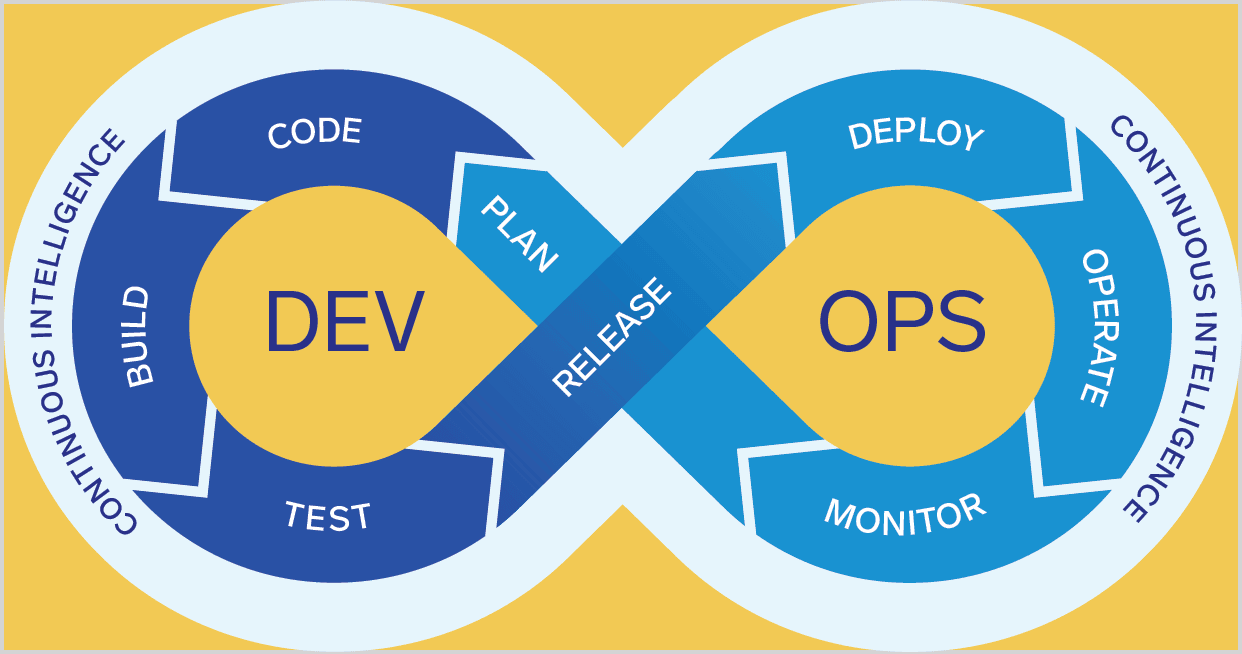
Get the report
MoreDevOps is a collection of best practices and working methods for the software development process whose cumulative goal is to shorten the development life cycle and support practices such as continuous integration, continuous delivery and continuous deployment.
The term "DevOps" is a combination of "Software Development" and "Information Technology Operations," sometimes known as IT Operations or ITOps.
DevOps software is a set of tools that help developers and engineers along each of the seven steps of the DevOps process. DevOps software systems include tools for:
The purpose of DevOps software is to build automation throughout the function. Tools used for DevOps should help to eliminate manual human work and drive efficiencies throughout processes.
Click here to learn more about DevOps Automation.
Central to the DevOps culture and philosophy is the idea that features should be delivered by cross-functional product teams that are equipped to both develop and run their software features. This notion is captured by the common DevOps mantra: "You build it, you run it."
In the past, software developers would build a new feature, then "throw it over the wall" to ITOps, where ITOps teams would then have to determine how to test, run, support and maintain the feature. In DevOps, a cross-functional product team is expected to manage features from conception to production with input from developers and ITOps. This eliminates knowledge silos between software development and ITOps teams and leads to faster releases with fewer bugs.
Some of the commonly referenced best practices that make up DevOps are:
While other software development paradigms, such as Agile software development, have a manifesto that delineates the exact methodologies for working within the system, DevOps principles emphasize workplace and team culture and the need to facilitate communication and eliminate knowledge silos throughout the development process. DevOps practitioners have identified several cultural factors that can predict DevOps success, such as:

Reducing friction between ITOps teams and software developers is one of the most important cultural benefits of DevOps. The establishment of collaborating, cross-functional teams ensures that ITOps and developers work together towards solutions that benefit the customer instead of pointing fingers at each other when problems arise.
Successful DevOps teams embrace a collaborative culture and take ownership of their work while leveraging industry-leading techniques and working methods, along with best-of-breed software tools, to achieve the common goal of quicker releases and updates in a fast-paced development environment,
As with Agile software development, DevOps prioritizes the interactions of people over processes and technology - but processes and software are still part of DevOps.
A toolchain is a set of programming tools used to create a software product. DevOps practitioners follow a seven-step process for effective software development that leverages software tools to optimize each stage of the process:
Plan
In the planning phase, DevOps teams work to establish the business and application requirements for a product or feature. This includes activities like gathering requirements, creating a release plan, establishing security policy and requirements and deciding what metrics will be used to measure performance. Teams may use a software requirements definition tool such as Atlassian or iRise during this phase.
Create
In the creating phase, DevOps teams build, code and configure the software application. Teams may use metrics to measure code quality and performance, build performance and other methods before marking the product or feature as a candidate for release. Popular tools during this phase include GitLab, GitHub and CFEngine.
Verify, test, and validate
The purpose of software verification is to manage the quality of feature deployments into production. This includes software testing and validation exercises such as acceptance and regression testing, security and vulnerability analysis, configuration testing and performance measurement. Test automation tools and static security analysis applications are used in this stage of the development life cycle.
Package the release
When a new feature has passed verification, it is ready for release. Releasing a new software update or feature means deploying that feature into a production environment where it can be accessed by users. The final step is to package the release, also known as "staging" This includes practices such as package configuration and may involve an approval process that integrates feedback from managers or executives. Packaged management software applications, such as JFrog's Artifactory and ProGet, are used by DevOps teams to facilitate release staging and holding.
DevOps teams must coordinate their releases with other feature releases while ensuring that there are back-ups in place to restore the system if the release causes a system failure. Some DevOps teams may automate the process using scheduled or timed releases. The best-known vendors of release management software include IBM, BMC Software and VMWare.
DevOps configuration
The software development process does not end with release to production, as an additional configuration may be required to optimize performance. These activities can include application or data storage provisioning, network provisioning and general configuration of the release. DevOps teams use Infrastructure-as-Code tools and configuration automation to streamline this process, with notable tools such as Ansible, Chef and Otter.
DevOps monitoring
Once a release has been configured and optimized, it should be monitored for performance and security, and to understand its impact on end users. DevOps teams are responsible for monitoring the performance of IT infrastructure, measuring customer experience using pre-defined metrics and capturing production statistics to ensure the feature is functioning correctly. Sumo Logic provides a premium tool that leverages machine learning to help DevOps teams facilitate effective application monitoring in the production environment.
Sumo Logic is the world's leading platform for DevSecOps, providing functionalities that empower software developers, IT security analysts and IT operators to deliver the best results throughout the software development process. With Sumo Logic, DevOps teams can proactively monitor applications in the production environment for bugs, quickly detect security threats with the latest threat intelligence and capture critical application performance metrics that drive effective business decision-making.
Reduce downtime and move from reactive to proactive monitoring.